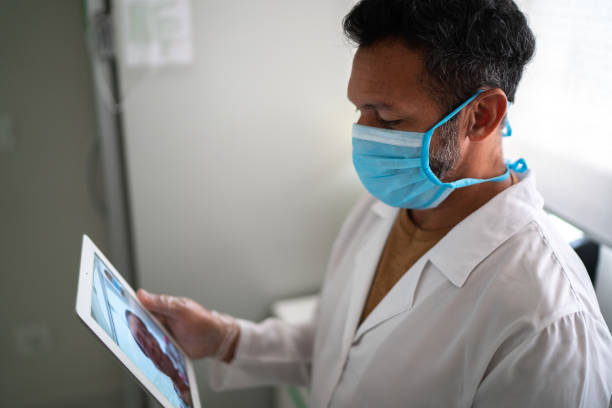 |
| patient monitoring solutions |
In the ever-evolving landscape of modern healthcare, the emphasis on patient care extends far beyond the confines of the operating room. A critical aspect of this continuum is the postoperative period, where vigilant and precise patient monitoring solutions play a pivotal role in ensuring a smooth recovery. In this comprehensive exploration, we delve into the significance of patient monitoring in postoperative care, examining how advanced solutions are shaping the landscape of healthcare delivery.
The Crucial Role of Patient Monitoring Solutions
Understanding Patient Monitoring
Patient monitoring solutions encompass a spectrum of technologies and devices designed to track and assess the vital signs and overall health of individuals. In the context of postoperative care, these solutions become indispensable in maintaining a real-time understanding of a patient's physiological status.
Real-Time Insights for Optimal Care
The integration of advanced monitoring systems allows healthcare professionals to receive real-time data on crucial parameters such as heart rate, blood pressure, oxygen saturation, and more. This wealth of information enables swift intervention in case of any deviations from the expected recovery trajectory, ultimately enhancing patient outcomes.
Technological Innovations in Patient MonitoringWearable Devices
Modern patient monitoring extends beyond traditional bedside equipment. Wearable devices equipped with sensors enable continuous monitoring, offering patients greater mobility during the recovery phase. This not only enhances the patient experience but also provides healthcare providers with a more comprehensive dataset.
Telehealth Integration
The advent of telehealth has revolutionized postoperative care. Patient monitoring solutions now integrate seamlessly with telehealth platforms, allowing healthcare professionals to remotely monitor patients. This not only reduces the burden on healthcare facilities but also enables patients to recover in the comfort of their homes.
Benefits of Patient Monitoring Solutions in Postoperative Care
Early Detection of Complications
One of the primary advantages of robust patient monitoring is the early detection of complications. Timely identification of issues allows healthcare providers to implement interventions promptly, preventing the escalation of problems that could negatively impact recovery.
Personalized Care Plans
Patient monitoring solutions facilitate the creation of personalized care plans based on individual data. This tailored approach to postoperative care considers the unique needs and responses of each patient, optimizing the recovery process.
Overcoming Challenges and Ensuring Security
Data Privacy and Security
As patient monitoring becomes more digitized, ensuring the privacy and security of patient data becomes paramount. Rigorous measures must be in place to safeguard sensitive health information and maintain patient trust in these technologies.
Integration with Electronic Health Records (EHR)
To maximize the benefits of patient monitoring solutions, seamless integration with electronic health records is essential. This not only streamlines data access for healthcare providers but also contributes to a more comprehensive patient history.
The Future of Patient Monitoring in Postoperative Care
Artificial Intelligence and Predictive Analytics
The integration of artificial intelligence (AI) and predictive analytics holds promise in further enhancing patient monitoring. These technologies can analyze vast datasets to identify patterns and trends, enabling proactive interventions and personalized treatment strategies.
Continuous Evolution and Adaptation
The field of patient monitoring is dynamic, with continuous advancements shaping the future. Staying abreast of emerging technologies ensures that healthcare providers can leverage the latest innovations to optimize postoperative care continually.
Challenges and Opportunities in Patient Monitoring
Resource Allocation and Training
While the benefits of patient monitoring are evident, challenges exist in terms of resource allocation and training. Healthcare facilities need to invest in both the technology and the training of staff to effectively utilize and interpret the data provided by monitoring solutions.
Patient Engagement
Engaging patients in their own care is crucial for successful postoperative recovery. Patient monitoring solutions can empower individuals to take an active role in managing their health, but effective communication and education are necessary to ensure patient understanding and compliance.
Standardization of Monitoring Practices
With the myriad of patient monitoring solutions available, there is a need for standardization in monitoring practices. This ensures interoperability between different systems and allows for seamless data exchange, contributing to a more unified and efficient healthcare ecosystem.
Conclusion
In conclusion, patient monitoring solutions stand as a cornerstone in postoperative care, providing healthcare professionals with the tools needed for precise, personalized, and proactive patient management. As we navigate the evolving landscape of healthcare technology, the integration of these solutions will undoubtedly contribute to improved outcomes and a higher standard of care for postoperative patients.
Remember, the journey to recovery extends beyond the surgical suite, and patient monitoring solutions pave the way for a healthier, more connected future in healthcare. By addressing challenges, embracing opportunities, and staying at the forefront of technological advancements, the healthcare industry can continue to enhance the postoperative experience, ensuring the well-being and satisfaction of patients across the globe.




Comments
Post a Comment